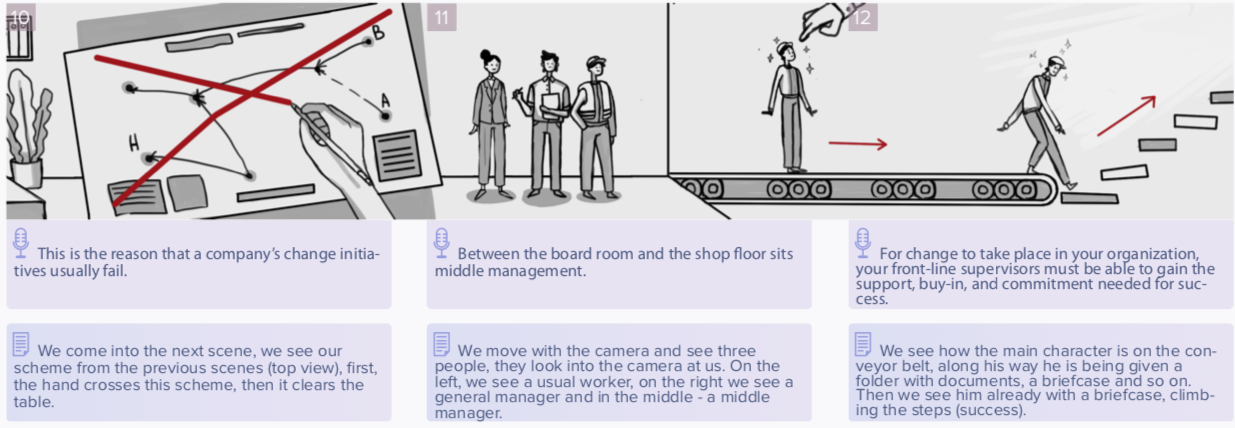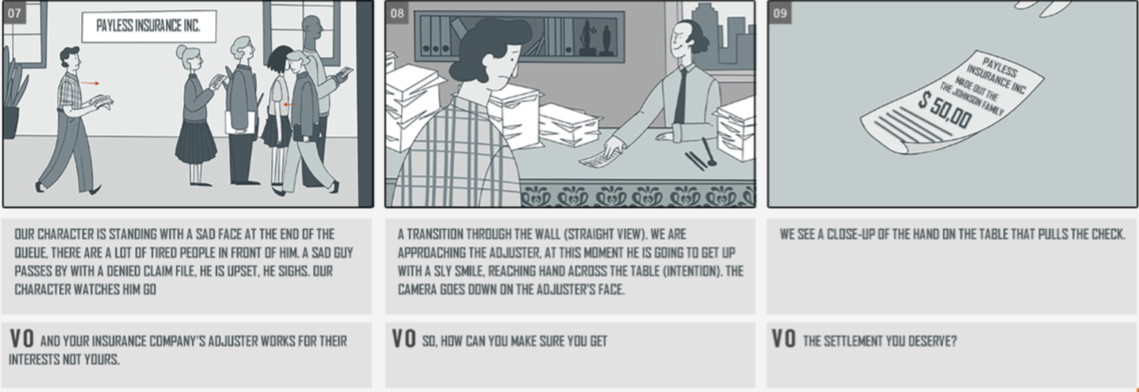
We keep saying that explainer videos are good for your brand-building but how to make your video perfect and not to fail at the very beginning of its creation? As you know, script writing is one of the most important parts of the whole creation process, but what about storyboard? Is it necessary to create a storyboard for each explainer video? How does it help during animation?
Maybe, you’re already familiar with the word “storyboard”. It’s a sequence of sketches with all the actions and transitions that will take place in your future video. Usually, we create a storyboard for both a client and us.
First things first
Firstly, we need to check whether all the actions written in the script will work well in the video. And secondly, we need to make sure that the visual part meets client requirements. As you know, animation process is the most time-consuming, that’s why it’s important to reduce to a minimum all the possible mistakes.
We’ve decided to look through some of our projects and tell you why it’s a good idea to present your storyline not only in the words but also in visual pictures. First of all, let’s look at the storyboard we sketched for Aeulead. Our goal was to write a script which explains the main problems existing in labor-intensive industries and offer Auelead for their solutions.
In spite of the fact that we always send a very detailed script to our client, this time they had a lot of questions. They couldn’t imagine how all the scenes would look like in the final explainer video. For example, for the scenes 4 and 5 we offered the following:
”On the right, closer to the viewer, a large crane lifts the balk and transfers it more to the right. In the meantime, the camera continues to move to the right and we see how this balk is going down already in the factory workshop (a medium plan). We continue to move around this workshop. We see large industrial vehicles, then under the voice-over “maritime”, the canal with a towboat crosses the scene”.
Storyboard is a key point
Is it easy for you to get a picture? We don’t think so. If you write a script with your team, all the actions are formed in your imagination. But for a person who doesn’t participate in your discussion, it’s difficult to understand what idea you’re going to convey in each scene.
With this purpose in mind, for these scenes, we made a sketch you can see below.

Check out some more scenes below to understand how our storyboard usually looks. Heading to the link, you can read more about storyboard in our previous articles:


The same story we had with KohPlan explainer video. Maybe, we were too creative writing the script for this project. But considering the fact that both projects we’re talking about are serious enough, we tried to use as many details as possible to interest the viewer. As you may have guessed, for this one we also drew a storyboard to explain all minor details we wanted to implement.
What about transitions?
For example, we wanted to make a cool transition with a cup of coffee. “A hand wipes coffee. It makes a wave of a finger, lines fly from under it, we follow them, they form tables”. We think if you see it in the sketch, this idea seems to be more interesting and unusual. Just in words this suggestion would lose its meaning.

In the same way, we were working on the storyboard for an insurance company. In fact, the storyline for this project had to be serious and professional. We were not required to reinvent the wheel by brainstorming different creative ideas. But we decided to diversify this project by adding interesting details. For instance, the scene with an elbow, the actions were to be next: “We move to the next scene through the animation of the hand. The character bends the elbow and the next scene opens”. In a script, all these cool details are usually out of interest. If a person has no experience in animation, they don’t really pay attention to them. That’s why storyboard comes to the rescue. It helps to communicate with the client on a new level.


Animated cartoons
In conclusion, you can get rid of any delays by having a storyboard. When a storyboard is done, your team will have a clear idea of what a client would like to see in a finished video. And you can follow this visual map without any additional questions which always cause during animation. Besides, we can remember that the most well-known animated cartoons or movies are always created following a storyboard. It should be mentioned, that the first storyboard we’re used to working with today was developed by Walt Disney Productions in the early 1930s for Plane Crazy and Steamboat Willie. Since that time the concept of storyboard was actively used by different animation studios.
Storyboard definitely simplifies work on any project and we highly recommend to pay attention to it. Maybe, you still think that it’s a waste of time. But in fact, this magic tool makes you feel more confident in your ideas and reduces the number of edits during the animation.